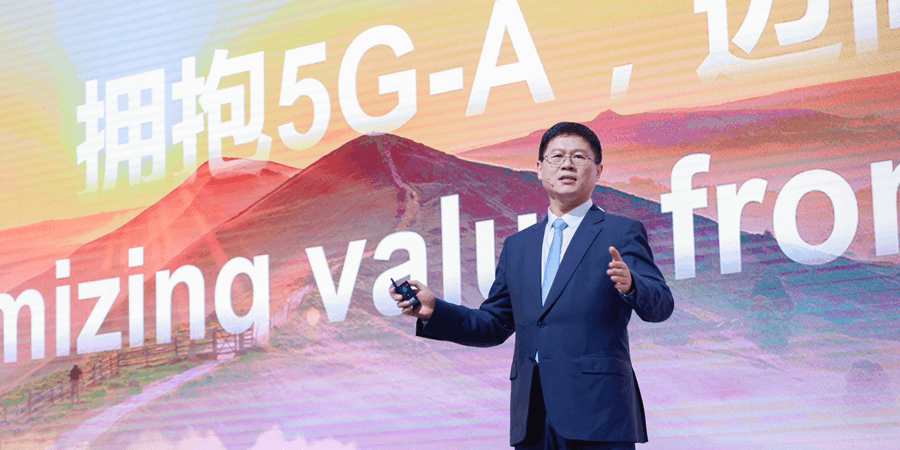Li Peng, Huawei's Corporate Senior Vice President and President of ICT Sales & Service, delivered a speech entitled, "Maximizing Value from Experience with 5G-A" on June 27, during Day 2 of MWC Shanghai.
His speech navigated the theme: "Seize the development opportunities of 5G-A and AI and stride towards a new era of experience monetization."
Peng highlighted the importance of personalized services as the cornerstone of growth, citing the aviation industry as a model. He detailed how Delta Air Lines revolutionized revenue by introducing differentiated cabin services—economy, business, and first class—which significantly boosted revenue per flight and set a new standard in the industry.
High-Quality Supply Drives New Demand
Drawing insights from the aviation industry's journey, Peng pointed out that high-quality supply drives and creates new demand.
According to the demand-supply model of the Academy of Social Sciences, high-quality supply can be categorized into upgraded supply and innovative supply. Upgraded supply relies on the continuous evolution and aggregation of technological capabilities, while innovative supply builds upon this foundation by incorporating business model innovation. Upgraded supply stimulates demand for improvement, whereas innovative supply stimulates new and untapped demand.
Tech and Business Propel the Mobile Industry Forward
The mobile communications sector has thrived through continuous technological advancement and business model innovation. In the 2G era, mobile voice technology and userbase monetization satisfied the need for constant communication, driving annual revenues past USD 400 billion.
The 3G and 4G eras saw mobile broadband technology and traffic monetization propel the mobile internet's growth, with revenues exceeding USD 900 billion annually.
New Industrial Upgrade Opportunities
Peng emphasized the need to seize strategic opportunities presented by 5G-A technology and network-cloud-AI synergy. Accelerating integrated capabilities and driving model innovation is essential. Entities must shift from single-dimensional to multi-dimensional operations and transition from traffic monetization to experience monetization. He concluded by stating the importance of exploring new development paths through four scenarios, aiming to unlock the full potential of this transformative era.
Peng noted that different user groups have different network experience requirements. Business travelers prioritize downlink rates, live streamers focus on uplink rates, and gamers are concerned about latency. 5G-A improves bandwidth capability by ten times. 5G-A ensures a consistent user experience by using wireless QCI-based scheduling, GBR services. This allows for the creation of differentiated packages and personalized services, increasing revenue and enhancing high-end customer loyalty.
Cloud Phone Innovation
Cloud Phone services are pioneering a new paradigm of innovative supply, integrating connectivity, computing, and ecosystem dynamics. Leveraging high-bandwidth, low-latency 5G networks and on-demand cloud resource capabilities, these services cater to diverse demographic needs for data isolation, and collaborative interactions.
The Cloud T card from Zhejiang China Mobile exemplifies this innovation, combining cloud capabilities. Users can benefit from seamless access to high-definition cloud phone portals, Migu Audio & Video, and third-party applications like NBA content.
Carriers can now offer 1 TB of dedicated traffic, expanding monetization opportunities through sponsored data plans and enhancing user engagement across multiple dimensions.
5G-A Network Capabilities
The upgrade of 5G-A network capabilities enriches B2B offerings significantly. Enhanced uplink/downlink rates, reduced latency, precise positioning, and deterministic networks empower over 30,000 existing industry private networks. This upgrade enhances industrial processes, such as intelligent operations and maintenance in train lines, where high-precision positioning and AI-driven vehicle detection boosts efficiency by over 30%.
Carriers can further enrich their B2B products by offering value-added services like network SLA guarantees, reliable network design, edge intelligence, and high-precision positioning.
Final Thoughts
Peng underscored the transformative potential of embracing 5G-A advancements and model innovation in the era of mobile AI. He emphasized that as the age of mobile AI rapidly approaches, carriers can enhance user experiences through network, cloud, and intelligent capability aggregation, thereby stimulating latent demand.
By accelerating business model innovation towards multi-dimensional operations and experience monetization, carriers can create substantial value and lead industry development. Highlighting global momentum, Peng noted that over 30 carriers have completed technical verifications, more than 60 have announced commercial plans, and significant advancements have been implemented across the industry’s development and deployment chain, heralding the widespread adoption of 5G-A.
By Christine Ziadeh, Group Director of Content at Telecom Review Group










